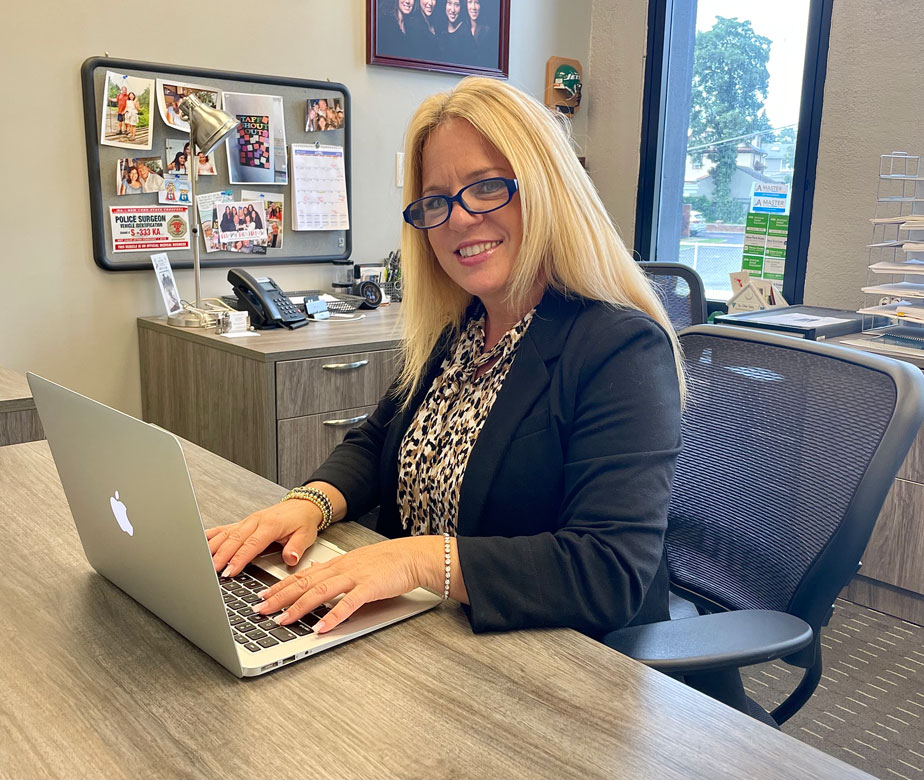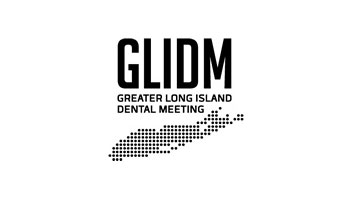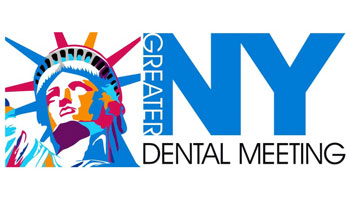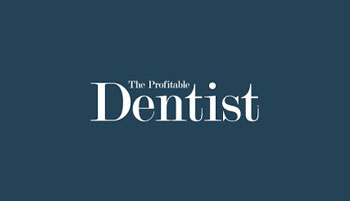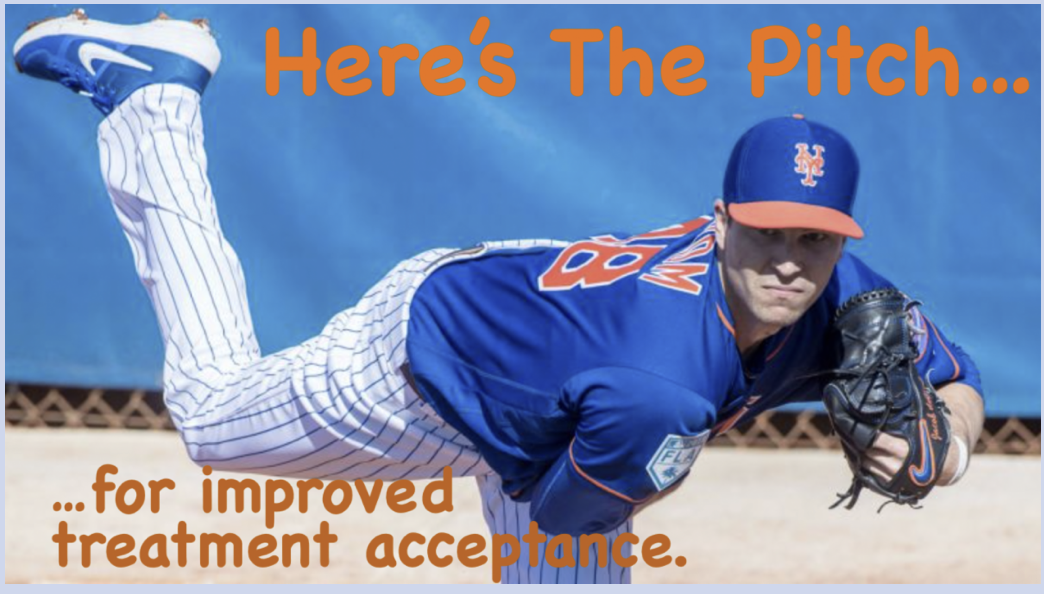
HERE’S THE PITCH FOR IMPROVED TREATMENT ACCEPTANCE – MAY 2021
One of the joys of Spring is the return of baseball. The crack of the bat, the sound of a pitched ball hitting the catcher’s mitt, the sight of a majestic homerun, the precision of an around-the-horn double-play, the celebration between a pitcher and catcher upon the final out. As a former catcher, I focus on the pitcher-catcher relationship. Here in New York we have the joy of watching Jacob DeGrom take the mound for the Mets every fifth day. Over the last four seasons he has established himself as the pre-eminent pitcher in the game. One of the things that I observe in watching DeGrom is that he rarely shakes off the pitches called by his catcher. I will admit, as a catcher, having a pitcher as good as DeGrom makes the pitch calling much easier. But the importance of the pitcher and catcher being on the same page cannot be understated. In your dental practices, it is equally important for the hygienist and doctor to be on the same diagnostic page in order to achieve higher treatment acceptance.
The relationship between a professional pitcher and his catcher should be a foundation on which a successful baseball team is built. The communication between the two should be precise. The ability to read what the other is thinking, and feeding off of each other’s energy, makes for better baseball with the expectation for better outcomes. Building the relationship takes time and it is dependent on adherence to a common philosophy, understanding a common strategy and communication that leaves no questions.
The relationship between a dentist and his, or her, hygienist should be a foundation on which a successful clinical dental team is built. The communication between the two should be precise. The ability to read what the other is thinking, and feeding off each other’s energy, makes for better treatment acceptance with the expectation for better patient outcomes. Building the relationship takes time and it is dependent on adherence to a common philosophy, understanding a common strategy and communication that leaves no questions.
When we look at a dental practice’s level of treatment acceptance, there are several issues that must be factored in. Dental Intelligence has studied levels of treatment acceptance in thousands of general practices. They have determined that the average dental practice achieves 39% treatment acceptance. The top 10% of practices achieve 58% treatment acceptance, and the bottom 10% achieve 21% treatment acceptance. We also compare these percentages with the relative percentage of hygiene production to restorative production in a particular practice.
Most practices suffer from treatment acceptance far beneath their potential. When we train a practice on the skills necessary to achieve greater acceptance, we see these percentages climb, their schedules fill with more productive procedures, and practice revenue soars.
We frequently see a relatively high treatment acceptance rate with a simultaneous low restorative percentage. This is an indication that the diagnostic criteria may be very conservative. I am not judgmental when I find this, but rather I choose to inform the doctor how their criteria relate to what we see among a wide cross-section of practices. I do not like the relative terms of aggressive vs conservative. I prefer to think of the criteria being proactive vs conservative with proactivity often times being the more conservative approach long-term.
We teach practices to establish uniform, and understood, diagnostic criteria for a particular practice. I do not care about their ultimate philosophy. That is their prerogative. I stress the importance of all of the clinicians within a practice, having the SAME criteria. There is no room in healthcare, especially within a single practice, for individual preference. This leads to inconsistency and confusion, which leads to lower patient confidence. We establish diagnostic criteria by reviewing a collection of photos of teeth with varying degrees of decay, fracture and pathology. The goal is to establish laser focus on agreeing on what the recommended treatment will be for a particular condition. Once these criteria are agreed on among the doctors in a practice, they then do the same exercise with their hygienists. The expected result is that every doctor and hygienist would likely agree on the recommended treatment for a particular tooth. This enables hygienists to confidently predict what the doctor would recommend and engage in co-diagnosis with the patient prior to the doctor entering the room.
If you would like to engage in this exercise for the doctors and hygienists in your practice to establish universal diagnostic criteria, we can conduct this exercise for you with a scheduled teleconference just for you and your practice. If you would like to schedule this, please text me at 516-524-7573, or email me at drkatz@smilepotential.com.
We observe hundreds of practices every year. One of the things that I focus on is the interaction between the hygienist and doctor during “hygiene checks”. The scenario that I see most is that hygienists either do not point out teeth with problems, leaving them for the doctor to find, or they ask the doctor to look at a particular tooth or two, with no particular concept of expected recommended treatment. This forces the doctor to spend far more time than should be necessary to inspire a patient to accept needed treatment. These longer hygiene checks cause the hygienist to run behind in their schedule, and it cuts the doctors production by taking them out of their treatment rooms for more time than is necessary.
The system we teach client practices has the hygienist using intraoral photos to identify teeth with problems of decay or fracture. The hygienist uses these photographs to demonstrate to the patient that a particular tooth, or teeth, have a problem, that the problem, if untreated, could develop into worse problems of pain or infection and they conclude with a discussion of the benefits of the treatment. Our patients do NOT buy crowns or restorations from us. They buy the benefits of having those restorations done. This discussion describes how “the doctor will recommend treatment for the tooth that will make it stronger, make it last longer, be healthier, and look beautiful.” This discussion avoids crossing the line between what a hygienist can do according to their scope of practice. With this discussion repeated to the doctor by the hygienist when he, or she, comes in to check the patient, the BENEFITS of the treatment are reinforced. Finally, the doctor needs to merely confirm the recommendations predicted by the hygienist in a much shorter span of time.
This all works well when the diagnostic criteria are uniform. When the hygienist and doctor are on the same page, there is rarely disagreement. In rare occasions of differed opinion, the doctor can always explain that the hygienist was correct, but that an effort to be more conservative may be possible at the time of treatment…WITHOUT THROWING THE HYGIENIST UNDER THE BUS. When universal criteria do not exist, hygienists may try to predict expected treatment but then get shot down when the doctor comes in and says, “We can watch that.” “Watching” is wrong on many levels, which can be described in another article. The bottom line is that watching transfers ownership of the problem for the patient to the doctor and it deprives patients of the ability to make proactive decisions about their own care.
The act of differing opinions on recommended treatment in the hygiene room is very similar to the pitcher shaking off the signs of their catcher. When the catcher gives a signal and the pitcher shakes it off, asking for an alternate pitch type, it shows a lack of uniform diagnostic criteria on the hitting ability of the batter, or the situation. When we see repeated signals contradicted, it raises the confidence of the batter and this is frequently followed by a bad outcome for the pitcher and their team. When doctors “shake off” the signals of their hygienists, their confidence is deteriorated and the patients often leave with a lack of a sense of urgency and they say, “I’ll think about it”, or “I’ll call you when I’m ready”.
Let’s work on our signals. Let’s limit the “shake-offs. Let’s get on the same page, diagnostically. And let’s start hitting home-runs when it comes to treatment acceptance. Play ball !!!.
